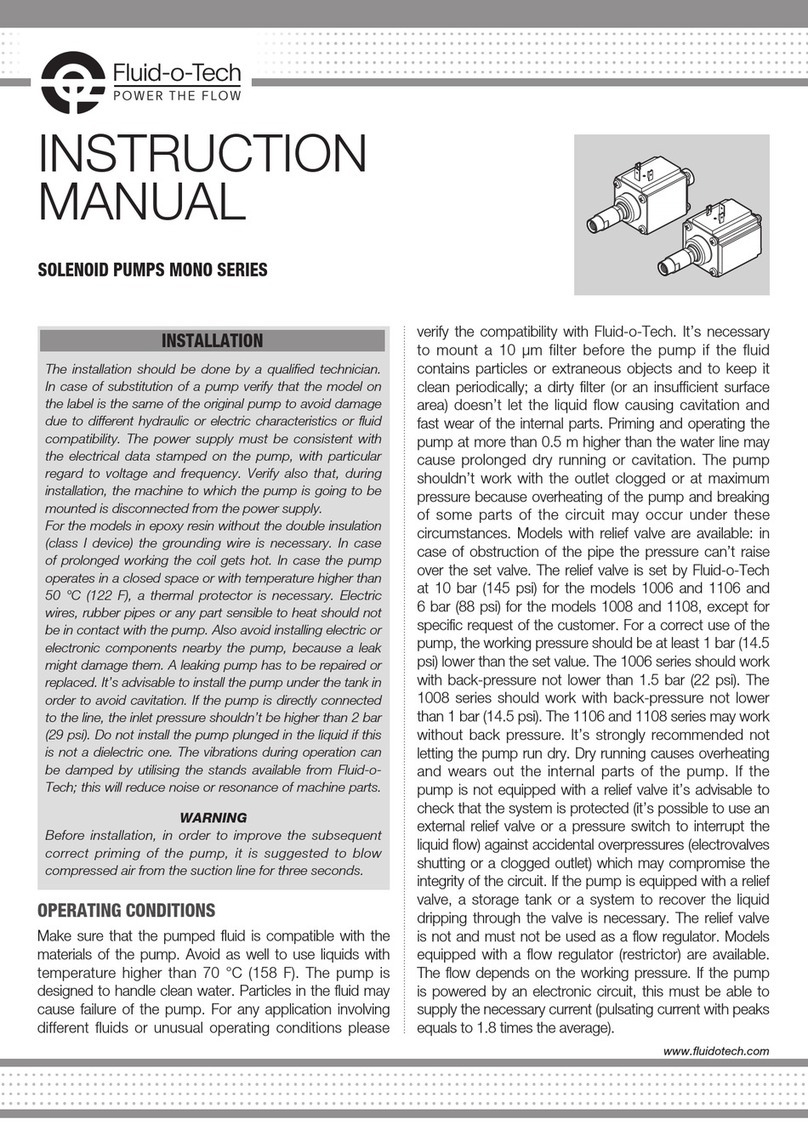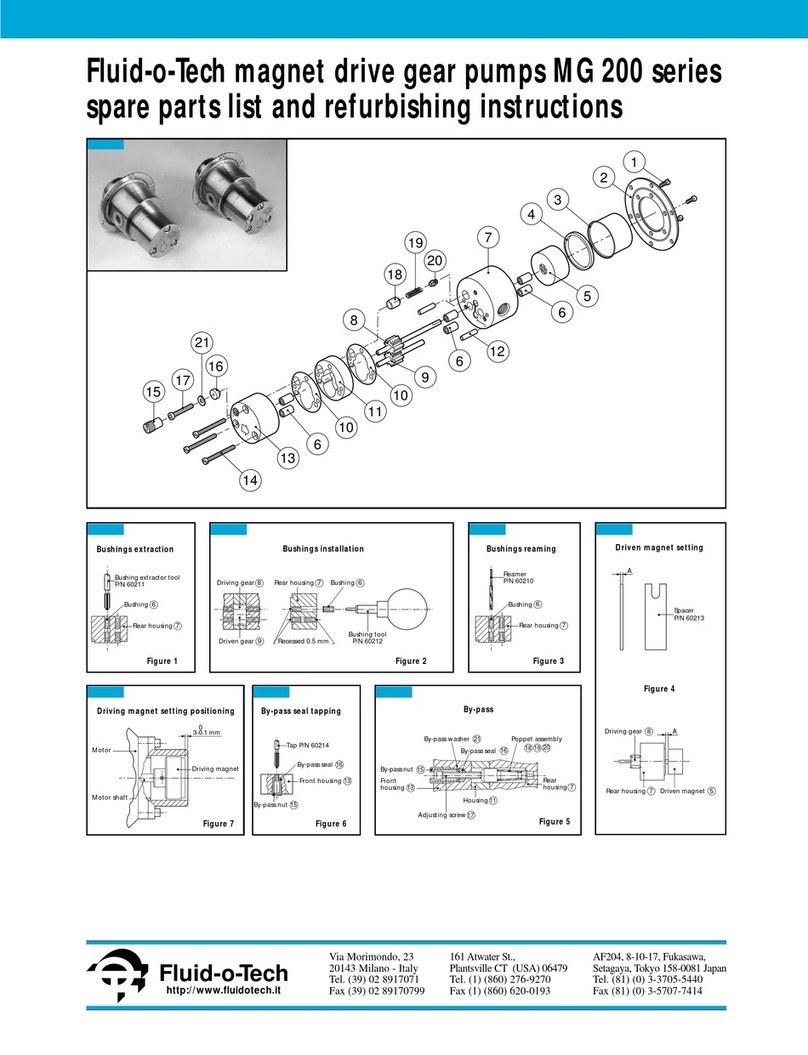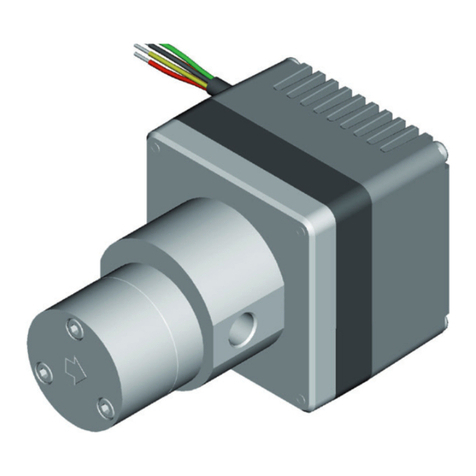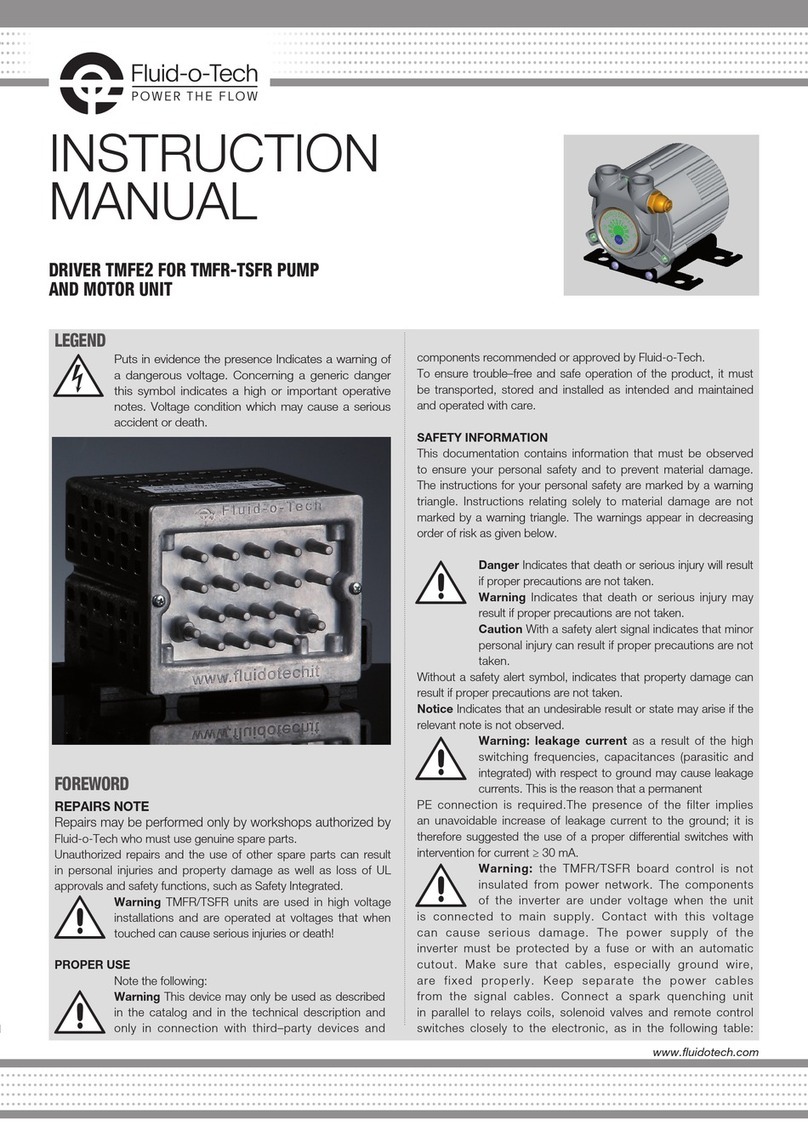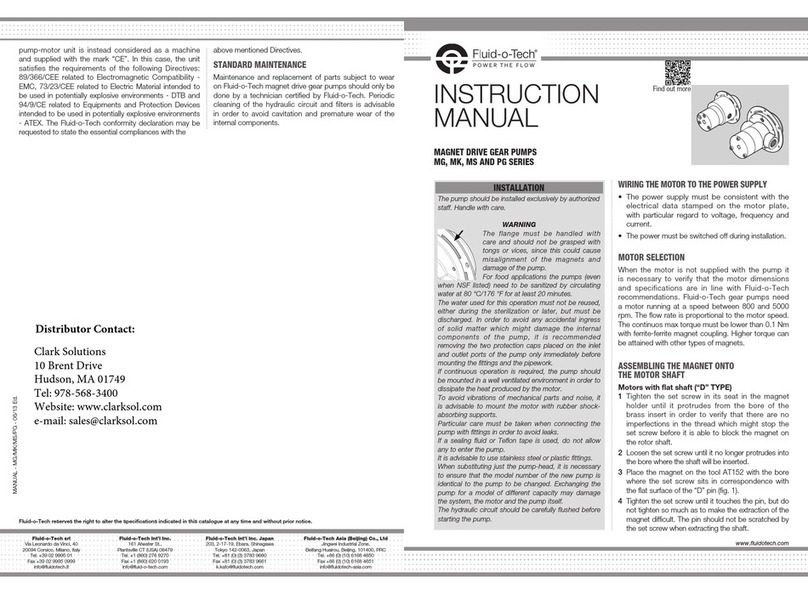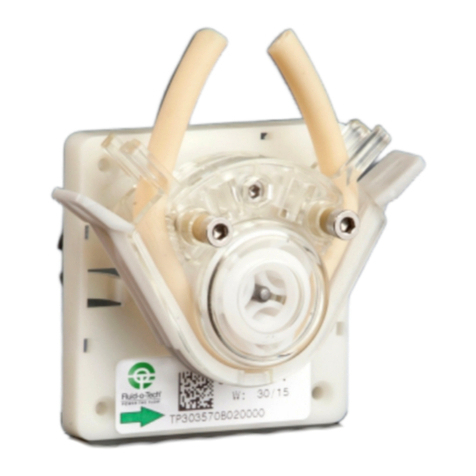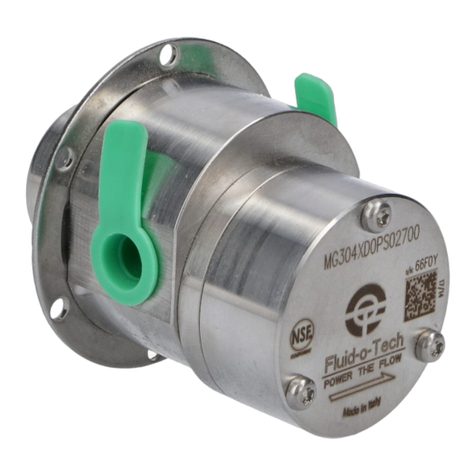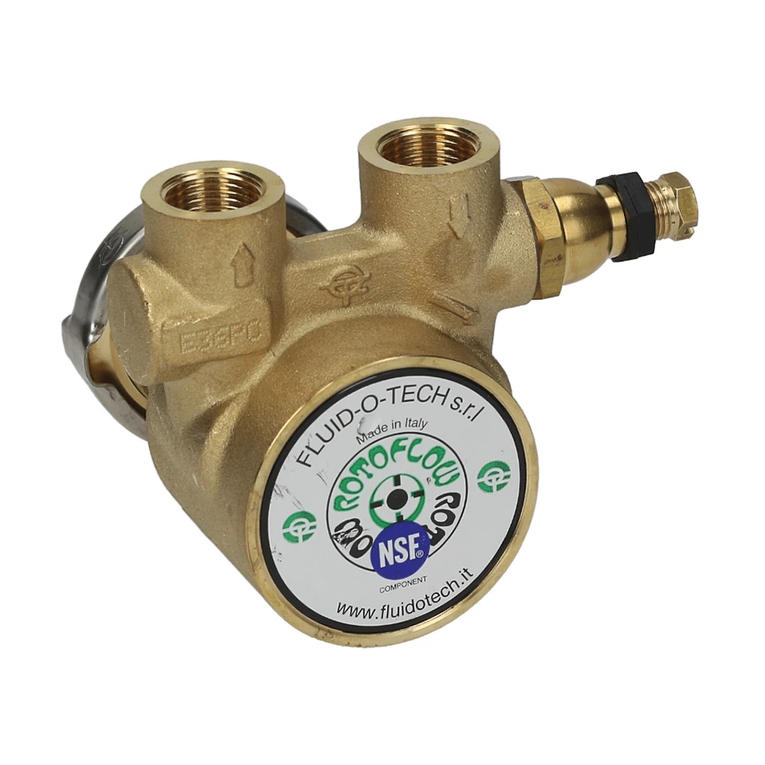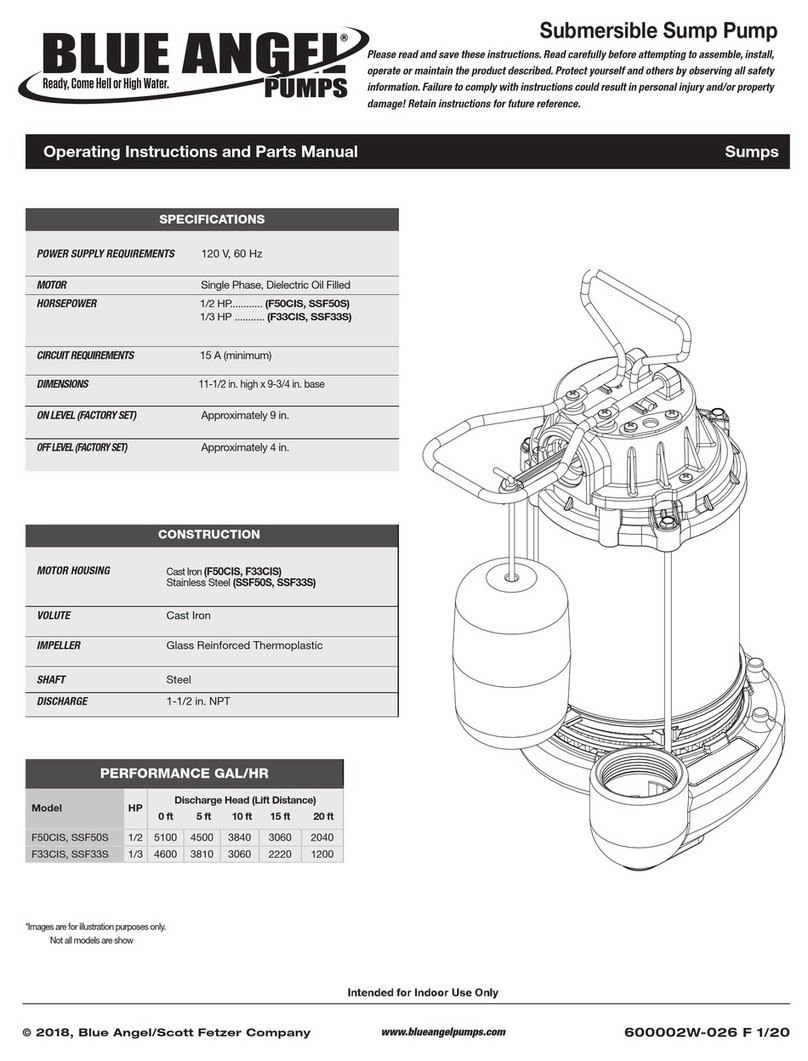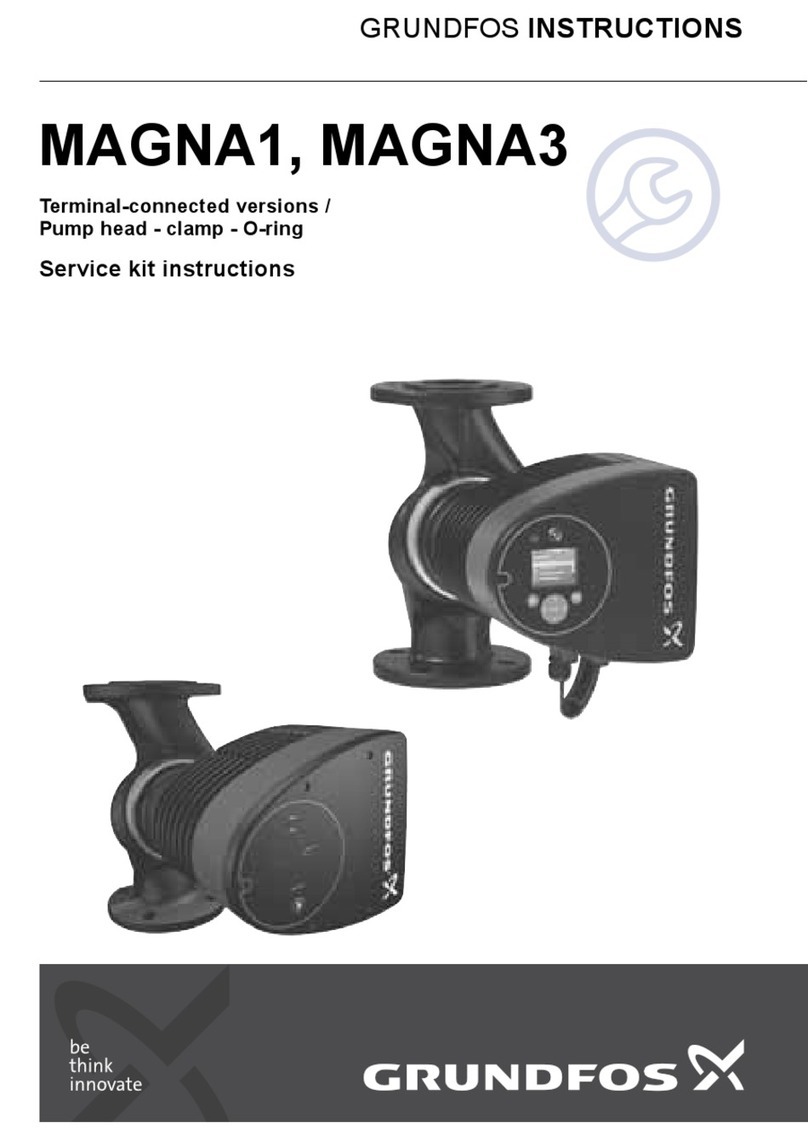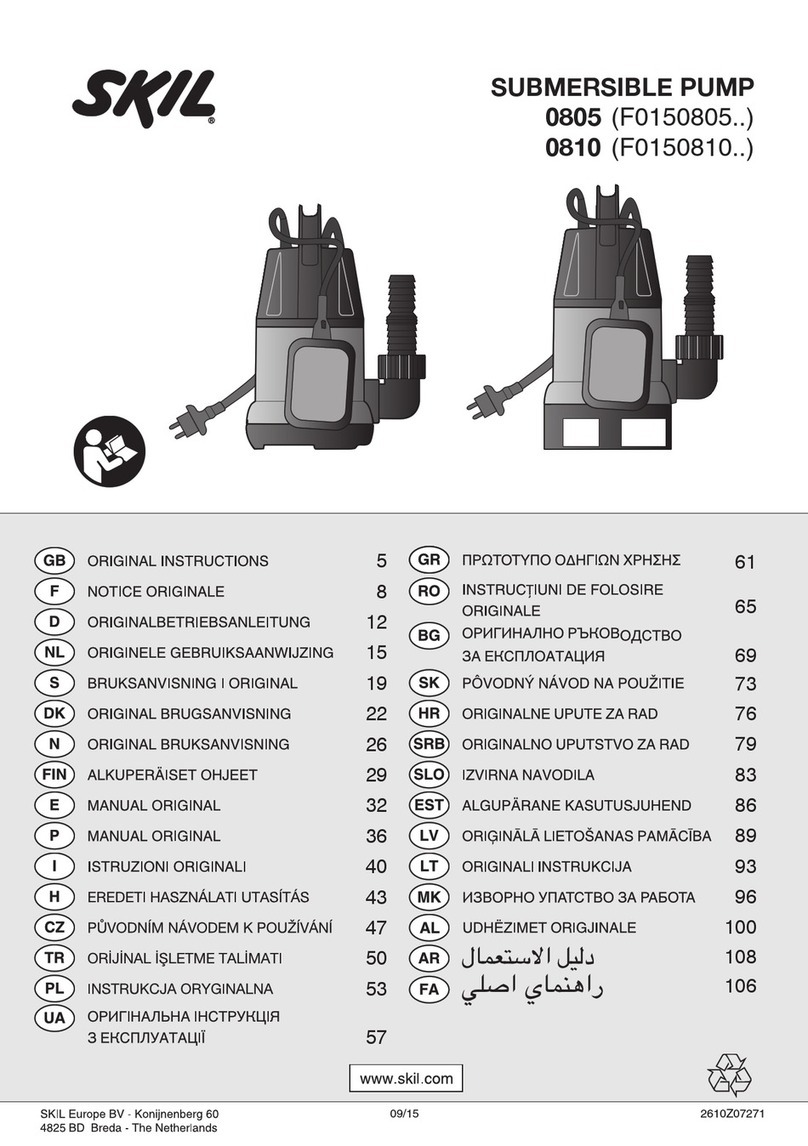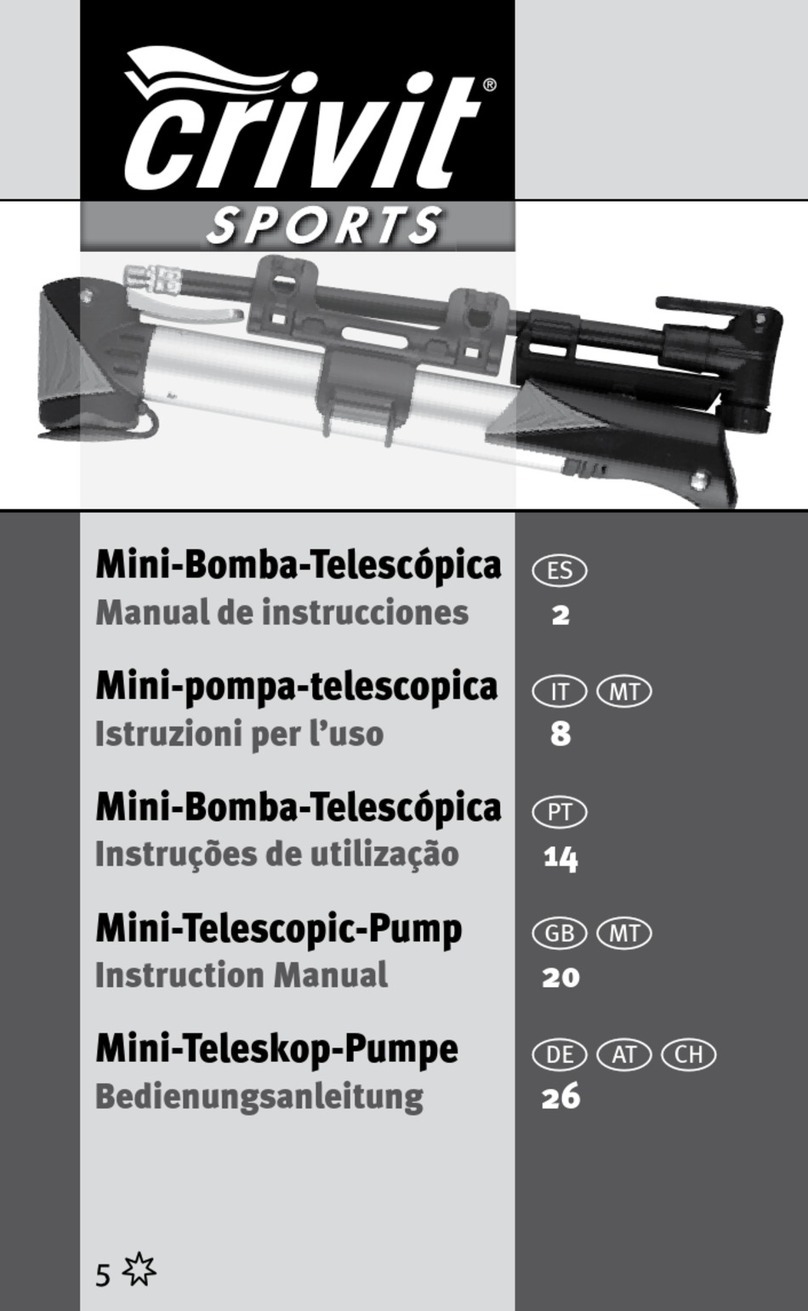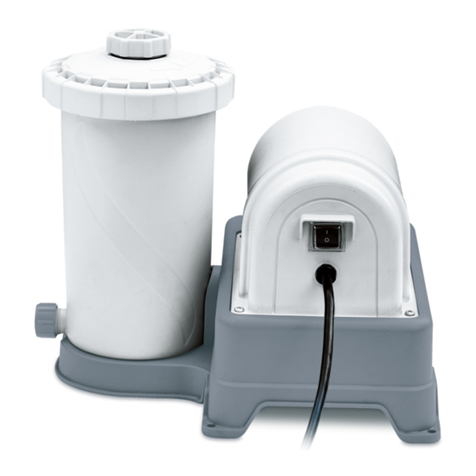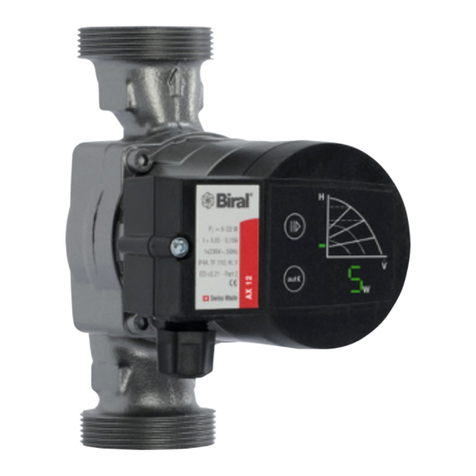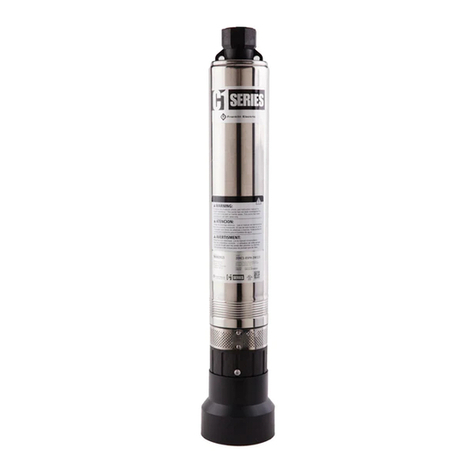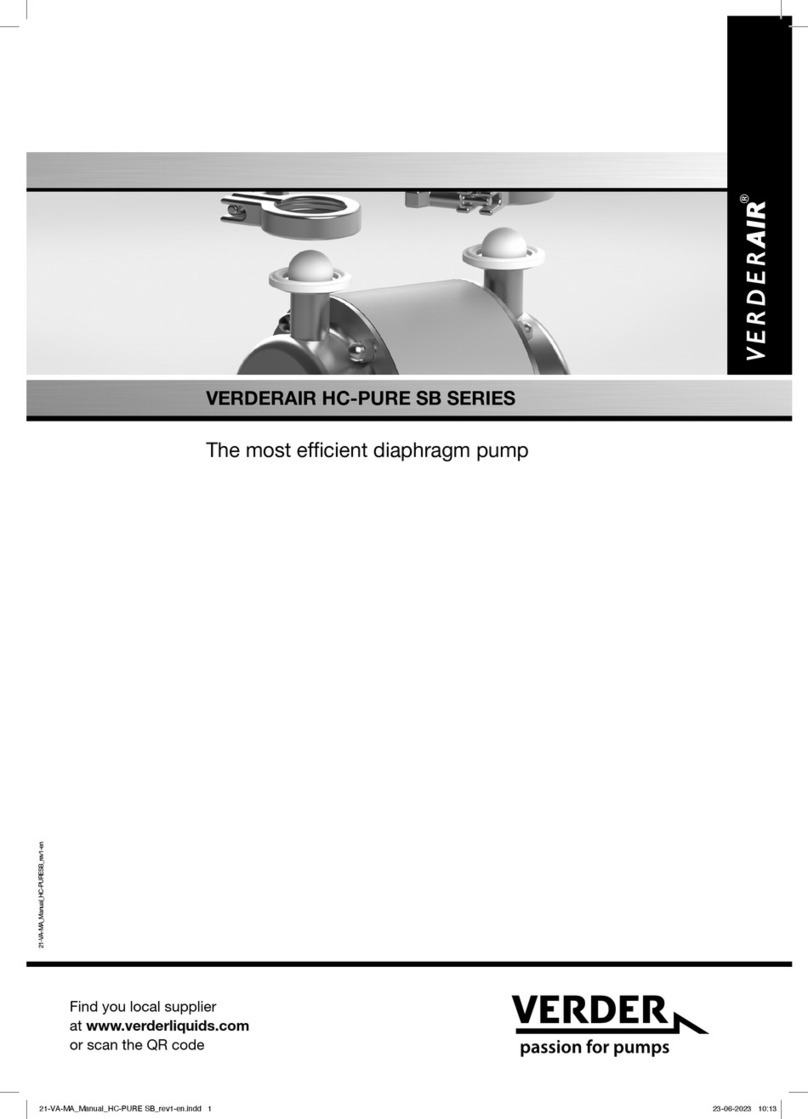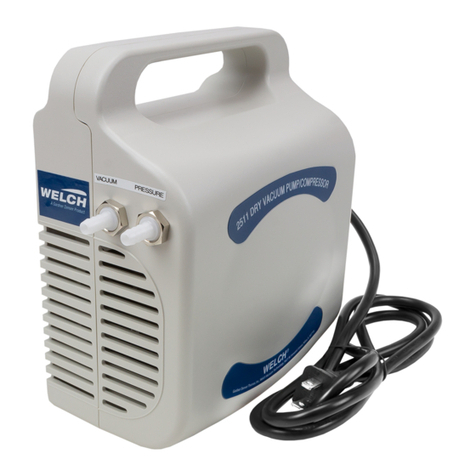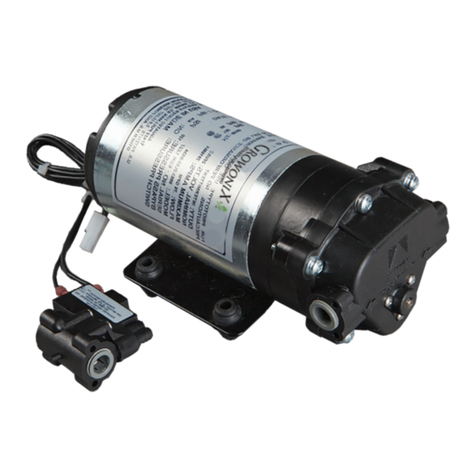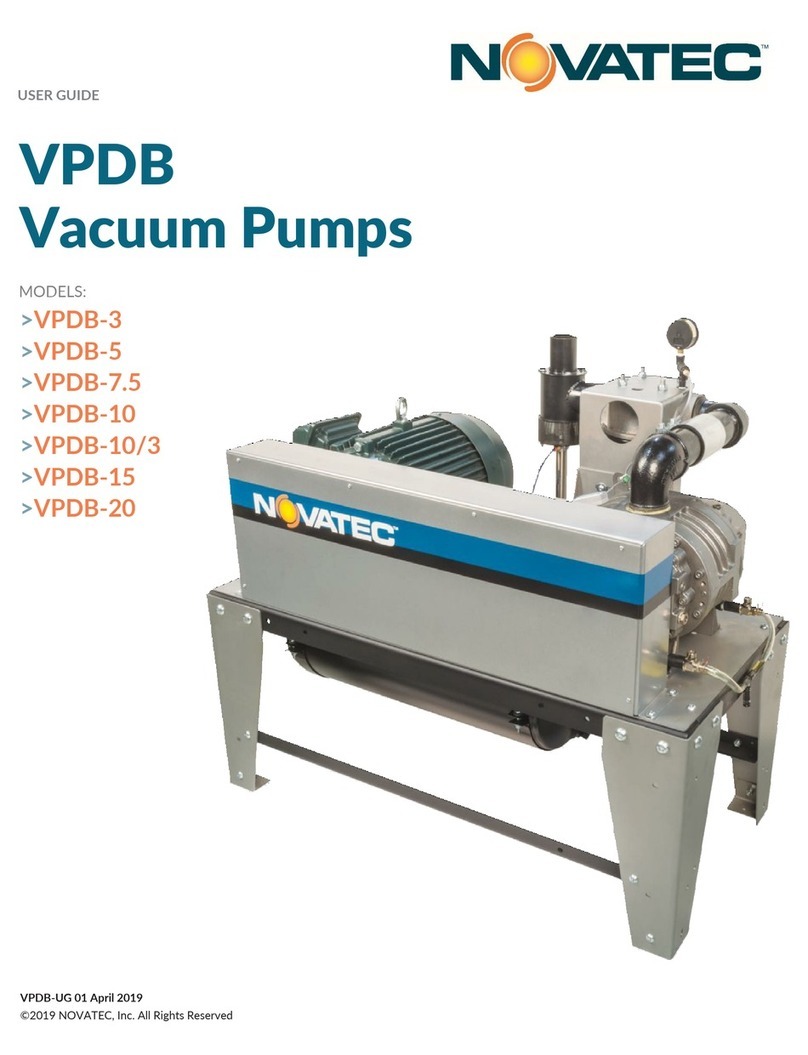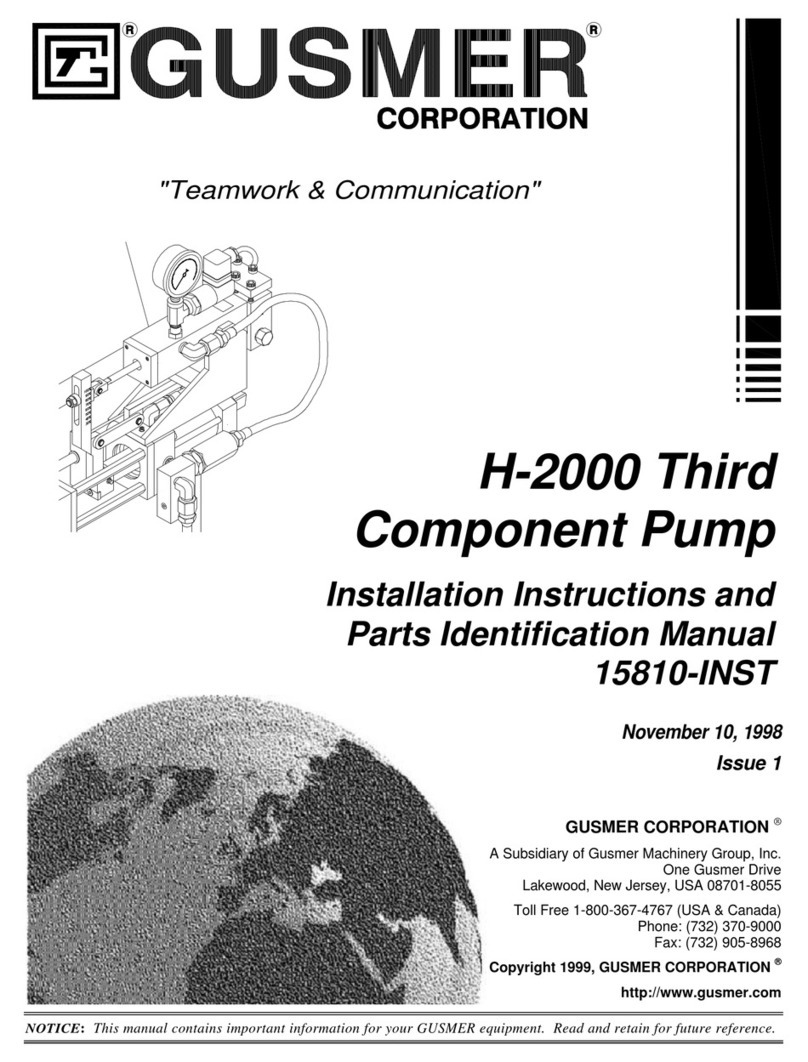
9If the units are connected in circuits fitted with solenoid valves,
make sure these always act with a certain delay after the motor
shuts down. Solenoid valves with early or simultaneous closure
can cause excessive pressure or cavitation and damage the
unit and/or the hydraulic circuit.
10 We recommend inserting a fuse of a suitable size in the unit’s
power supply circuit to avoid damage to the unit and/or
electrical circuit.
11 Make sure the electrical connections can ensure the necessary
seal and insulation. Inadequate connections could cause
damage.
12 Choose your DGD PRO unit model in relation to the application
cycle and performance required. Using the units in harsher
conditions than the ones they were designed for could
cause damage. Use the unit only for the time required for the
application.
PLAN THE INSTALLATION
1Make sure the size of the electrical circuit and hydraulic circuit
is suited to the electrical and hydraulic features of the DGD
and DGM PRO units. Provide adequate identification for the
sections of the hydraulic and electric circuit.
2The installation must be conducted in a well ventilated, dry
area protected from splashes, away from heat sources and
flammable fluids. Install the pump in an accessible place to
make subsequent maintenance work easier.
3Make sure the unit is not subjected to vibration induced by the
mechanical or hydraulic connection. If such a condition occurs,
insulate the unit with adequate anti-vibration mounts.
4Provide for the cabling requirements of any additional electronic
boards. If the boards are fitted with heat sinks, install them
adequately to favour dissipation through natural convection.
INSTALLATION
1Secure the unit from a mechanical point of view. We
recommend installing it horizontally (with the motor axis parallel
to the ground) or, in the event of vertical installation, with the
pump facing downwards.
2Remove any IN/OUT protective plugs on the ducts.
3Connect the unit to the hydraulic and electrical circuit. Make
sure it does not cause mechanical stress and pay special
attention to the fluid there may be in the pipes, as this must
not come into contact with electrical parts. In case of negative
suction head, prime the unit by pouring a little water into the
pump, taking care not to wet the electrical parts. The electrical,
hydraulic and mechanical connections must be able to ensure
the necessary seal during operation of the unit.
4Make sure the polarity and voltage in the electric circuit near
the connection to the motor matches the data reported on the
unit’s plate. Identify the positive pole, which should preferably
be protected by a fuse. Please remember that reversing the
polarity may cause permanent damage to the unit. With the
electrical circuit not powered on, connect the motor.
5Make sure the unit is able to prime the fluid. If this does not
happen after 15 seconds, check the efficiency of the intake
circuit’s seal. Make sure there are no leaks in the hydraulic
circuit in both the delivery and in the intake section.
6Check the operation of the valves, which must be fully open
when the unit is installed. Gradually close the delivery valve until
the required performance is achieved. Finally, make sure the
hydraulic performance and absorption values are consistent
with the ones the machine was designed for.
7Once the pump has been primed, check if it is operating
correctly. The parameters to verify this are: the rotation speed
of the motor, the flow rate and pressure in relation to the power
absorbed. Make sure there are no air bubbles in the delivery/
intake duct. Air bubbles could be caused by cavitation or poor
seal of the pipe connected to the intake duct.
CONNECTING THE MOTOR TO THE MAINS
The electrical features of the mains must be compatible with the
electrical data on the motor’s plate, particularly the supply voltage
and frequency. The motor must not be connected to the mains
during installation.
OPERATING CONDITIONS
Make sure the pumped fluid is compatible with the materials of the
pump. Fluid-o-Tech’s gear pumps are designed to work only with
clean fluids and are tested with water at ambient temperature. Any
other fluid and/or operating condition must be verified and approved
by the end customer under the actual conditions of use. Make sure
the maximum temperature of the liquid and the environment are
compatible with the model used.
It is necessary to use – especially on the pump’s intake duct –
pipes with an inner diameter adequately sized in relation to the
pump’s flow rate. This precaution prevents the risk of cavitation
and resulting damage on the pump. The sum of the inlet and outlet
pressure must not exceed the maximum system pressure indicated
in the catalogue. We recommend you adapt the size of the pipe in
relation to the delivery duct for pressure values at least 1.5 times the
maximum pressure of the system.
The pumped fluids must not contain solid suspended particles.
Before mounting the pump, we recommend installing a 10 μm
filter with a surface area large enough in order to prevent excessive
pressure drops in the circuit. Although occasional, particles larger
than 10 μm cause premature wear of internal components. It is
also important to periodically check the state of the cartridge and
the filter. To monitor the filter we recommend installing a pressure-
vacuum gauge after the filter. If the vacuum increases by more than
0.1 bar, the cartridge must be cleaned or replaced. Although DGD
PRO gear pumps are self-priming pumps, they should operate with
a positive suction head.
Indeed dry running causes premature wear of the internal
components of the pump. If the water supply system operates with
low pressure or no flow rate, it is necessary to install a pressure
switch before the pump to turn off the motor. It is also necessary
also protect the system from accidental excessive pressure
with safety devices such as a bypass valve or a pressure switch
connected to the motor. The solenoid valves must not be installed
in the circuit but, if necessary, must only be installed on the delivery
section of the pump.
We strongly recommend against installing the solenoid valves
before the pump. To avoid pressure peaks it is necessary to close
the solenoid valve only after the pump has stopped, then wait a
few seconds after the motor has been turned off to allow it stop
completely. The size of the inner diameter of the solenoid valve’s
duct must be adequate to the pump’s flow rate.
STANDARD MAINTENANCE
DGD Pro series pumps do not require any maintenance.
Replacement of parts must however be carried out by Fluid-o-Tech
personnel or by an official Fluid-o-Tech repair centre.
We recommend cleaning the circuit and filters periodically to prevent
cavitation and wear of the internal components of the pump.




